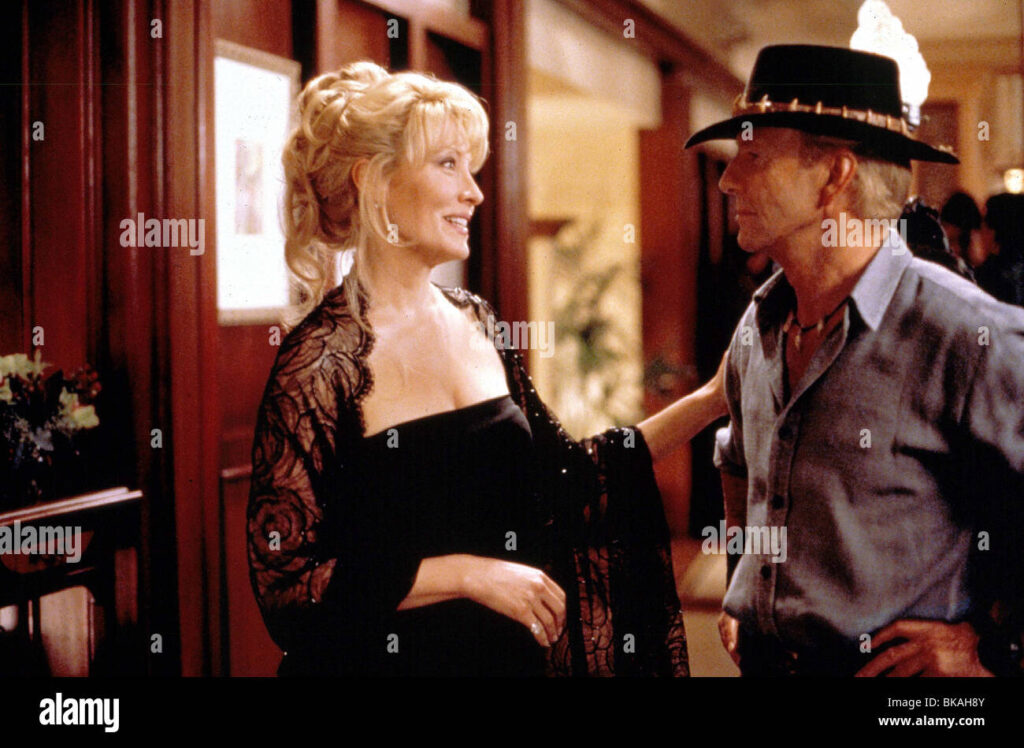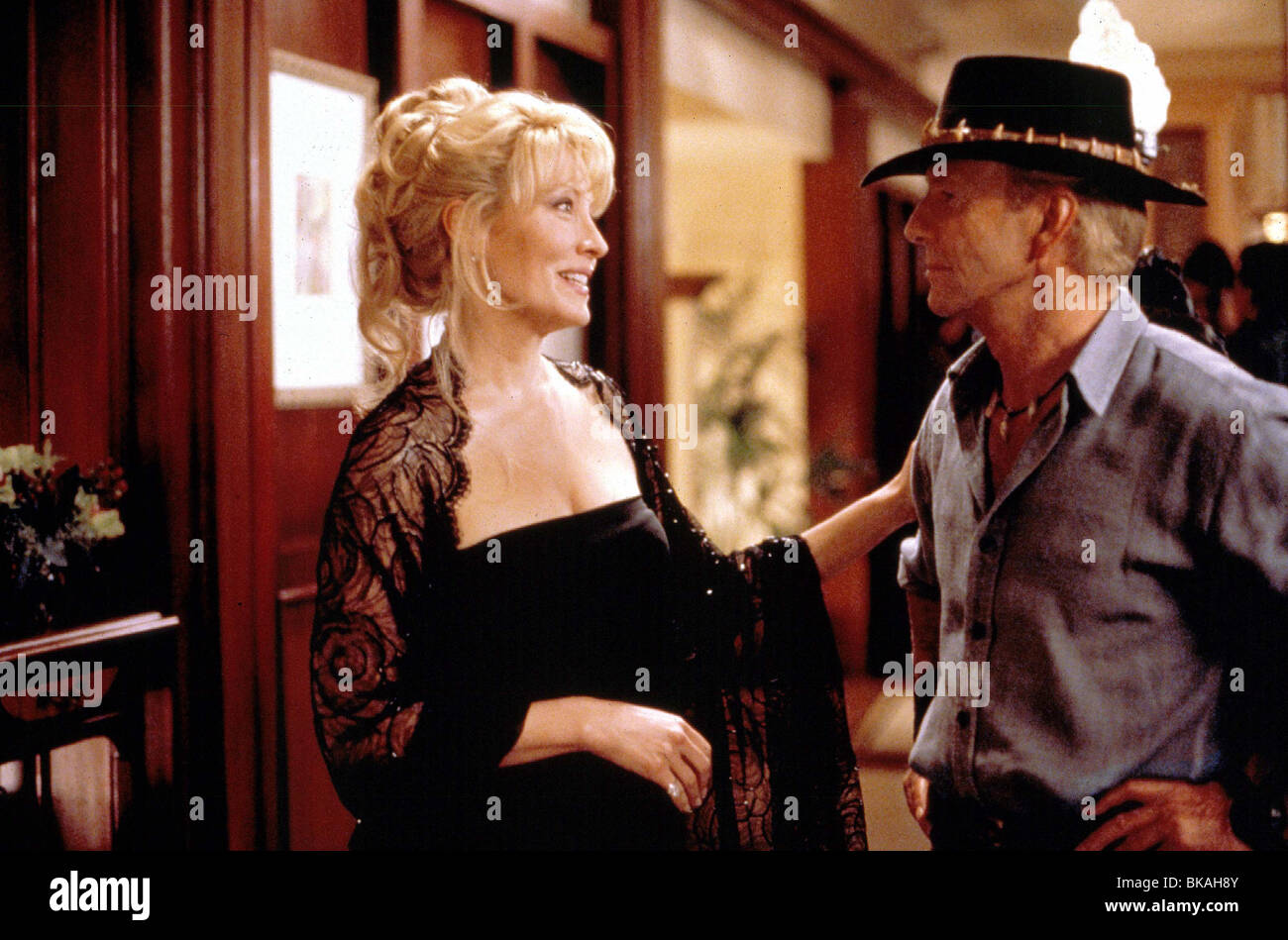
Crocodile Dundee In Los Angeles: A Deep Dive into the Outback in Hollywood
“Crocodile Dundee In Los Angeles,” released in 2001, marked the return of Mick “Crocodile” Dundee to the big screen after a decade-long hiatus. While not as critically acclaimed as its predecessors, the film offers a unique glimpse into the clash of cultures as the iconic Australian bushman navigates the complexities of Hollywood. This article will explore the film’s plot, reception, and its place within the larger Crocodile Dundee franchise.
The Plot: From the Outback to the Backlots
The story begins with Mick Dundee (Paul Hogan) living a peaceful life in the Australian Outback with his son, Mikey (Serge Cockburn). Their tranquility is disrupted when Sue Charlton (Linda Kozlowski), Mick’s partner and a journalist, is called to Los Angeles to temporarily head the Los Angeles bureau of her father’s newspaper. Sensing an opportunity for adventure and wanting to keep his family together, Mick decides to accompany Sue and Mikey to the City of Angels.
Once in Los Angeles, Mick quickly finds himself out of his element. While Sue tackles her journalistic duties, Mick, with his unique skills and bushman instincts, becomes entangled in a mystery surrounding a film studio. He uncovers a smuggling operation involving the studio’s films, using his unconventional methods to investigate and ultimately expose the criminals. The film blends comedic fish-out-of-water scenarios with action and adventure, showcasing Mick’s resourcefulness in a drastically different environment.
The Fish-Out-of-Water Dynamic
The humor in “Crocodile Dundee In Los Angeles” largely stems from the contrast between Mick’s rugged, down-to-earth personality and the superficial, often absurd, world of Hollywood. He’s bewildered by the celebrity culture, the obsession with image, and the general artificiality of the entertainment industry. This culture clash provides ample opportunities for comedic moments, as Mick’s straightforward approach often clashes with the convoluted schemes and eccentric personalities he encounters.
Unraveling the Conspiracy
The central mystery revolves around a series of suspicious activities at the film studio where Sue is investigating a potential story. Mick, with his keen observational skills, notices inconsistencies and begins his own investigation. He discovers that the studio is being used as a front for smuggling stolen artwork hidden within film canisters. His investigation involves navigating the complex world of movie sets, dealing with eccentric actors and directors, and ultimately confronting the criminals behind the operation. The plot provides a framework for Mick to showcase his resourcefulness and problem-solving abilities, even in an unfamiliar setting.
Reception and Critical Response
“Crocodile Dundee In Los Angeles” received mixed to negative reviews from critics. While some appreciated the return of the beloved character, many felt that the film lacked the charm and originality of the first two installments. Critics often pointed to the predictable plot, the reliance on tired fish-out-of-water tropes, and the overall lack of comedic spark. The film’s box office performance was also underwhelming compared to its predecessors, suggesting that the Crocodile Dundee franchise had lost some of its appeal over the years.
Critical Perspectives
Common criticisms included the film’s formulaic structure and its failure to offer anything new to the franchise. Some critics argued that the humor felt forced and that the fish-out-of-water scenarios were overused and predictable. Others noted that the plot was convoluted and lacked the simplicity and charm of the original film. However, some reviewers acknowledged that the film offered some lighthearted entertainment and that Paul Hogan still managed to capture some of the iconic character’s appeal.
Box Office Performance
While “Crocodile Dundee In Los Angeles” was not a box office disaster, it did not achieve the same level of success as the first two films. The film’s earnings were significantly lower, indicating a decline in the franchise’s popularity. This could be attributed to several factors, including the long gap between sequels, the changing tastes of audiences, and the negative critical reception. The film’s performance suggested that the Crocodile Dundee formula may have run its course.
The Crocodile Dundee Legacy
Despite the mixed reception of “Crocodile Dundee In Los Angeles,” the Crocodile Dundee character remains a significant part of popular culture. The original film, “Crocodile Dundee,” released in 1986, was a massive international success, introducing audiences to the charismatic Australian bushman and his unique perspective on life. The film’s success spawned a sequel, “Crocodile Dundee II,” which also performed well at the box office. These films cemented Mick Dundee’s place as a cultural icon, representing the rugged, independent spirit of the Australian Outback.
The Enduring Appeal of Mick Dundee
Mick Dundee’s appeal lies in his authenticity and his ability to navigate different worlds with ease. He’s a man of few words but great action, always ready to lend a hand and stand up for what’s right. His down-to-earth personality and his unwavering sense of humor make him relatable and endearing to audiences. Even in the face of unfamiliar situations, Mick remains true to himself, offering a refreshing contrast to the often-artificial world around him. The “Crocodile Dundee” character embodies the spirit of adventure and the importance of staying true to one’s roots.
The Franchise’s Impact on Australian Cinema
The Crocodile Dundee franchise had a significant impact on Australian cinema, showcasing the country’s unique culture and landscapes to a global audience. The films helped to promote tourism to Australia and contributed to the country’s growing international profile. The success of the franchise also paved the way for other Australian films and actors to gain international recognition. While “Crocodile Dundee In Los Angeles” may not have reached the same heights as its predecessors, it remains a part of the Crocodile Dundee legacy and a reminder of the character’s enduring appeal.
“Crocodile Dundee In Los Angeles” in Context: A Comparative Analysis
To fully understand the place of “Crocodile Dundee In Los Angeles” within the franchise, it’s helpful to compare it to the original films. The first “Crocodile Dundee” film introduced audiences to Mick Dundee and his unique way of life in the Australian Outback. The sequel, “Crocodile Dundee II,” saw Mick and Sue relocating to New York City, where they faced off against a Colombian drug cartel. In contrast, “Crocodile Dundee In Los Angeles” places Mick in the heart of Hollywood, where he uncovers a smuggling operation at a film studio. While each film features Mick in a different environment, they all share a common theme: the clash between Mick’s rugged individualism and the complexities of modern society.
Comparing the Humor
The humor in the Crocodile Dundee films is a key element of their appeal. The first two films relied on a combination of physical comedy, witty dialogue, and fish-out-of-water scenarios. “Crocodile Dundee In Los Angeles” attempts to replicate this formula, but the humor often feels forced and predictable. The jokes are less original, and the fish-out-of-water scenarios are less impactful. While the film still has its moments of levity, it lacks the genuine comedic spark of the original films. The original movies had a certain charm and innocence that later installments seemed to have lost.
The Evolution of the Character
While Paul Hogan reprises his role as Mick Dundee in “Crocodile Dundee In Los Angeles,” the character feels somewhat different compared to the earlier films. In the original films, Mick was portrayed as a resourceful and independent bushman who was always one step ahead of his adversaries. In “Crocodile Dundee In Los Angeles,” Mick sometimes comes across as more clueless and less capable. This shift in characterization may have contributed to the film’s negative reception. The character, while still recognizable, felt like a caricature of his former self.
The Lasting Impact of “Crocodile Dundee In Los Angeles”
While “Crocodile Dundee In Los Angeles” may not be considered a classic, it still holds a place in the hearts of some fans of the franchise. The film offers a nostalgic look back at a beloved character and provides a glimpse into the world of Hollywood through the eyes of an outsider. Despite its flaws, the film serves as a reminder of the enduring appeal of Mick Dundee and the Crocodile Dundee franchise. Ultimately, “Crocodile Dundee In Los Angeles” is a testament to the power of cultural exchange and the enduring appeal of a character who remains true to himself, no matter where he is.
The movie “Crocodile Dundee In Los Angeles” may not have been a critical darling, but it still represents a chapter in the story of Mick Dundee. The film’s exploration of Hollywood through the eyes of an Australian bushman offers a unique perspective, even if it doesn’t always hit the mark. Despite its shortcomings, “Crocodile Dundee In Los Angeles” remains a part of the Crocodile Dundee legacy, a reminder of the character’s enduring appeal and the franchise’s impact on popular culture. The film showcases the clash of cultures, the humor in the unfamiliar, and the importance of staying true to oneself, even in the most unexpected of environments. The legacy of “Crocodile Dundee In Los Angeles” is complex, but it cannot be ignored when discussing the franchise as a whole. The film, while not perfect, provides a unique lens through which to view Hollywood’s often-surreal world. In conclusion, “Crocodile Dundee In Los Angeles” is a noteworthy, albeit flawed, addition to the Crocodile Dundee series, highlighting the character’s enduring appeal even when transplanted to the unfamiliar terrain of Hollywood. The film’s attempt to recapture the magic of the original, while not entirely successful, still offers glimpses of the charm and humor that made Crocodile Dundee a cultural icon. The presence of “Crocodile Dundee In Los Angeles” in the franchise’s history adds another layer to the understanding of Mick Dundee’s journey and his impact on audiences worldwide. “Crocodile Dundee In Los Angeles” serves as a reminder of the character’s ability to adapt and find humor in the most unexpected situations. The film, despite its mixed reception, holds a unique place in the Crocodile Dundee saga, showcasing the character’s resilience and his capacity to bring a touch of the Outback to the glitz and glamour of Hollywood. The story of “Crocodile Dundee In Los Angeles” is one of cultural clash and comedic encounters, highlighting the character’s enduring appeal and his ability to navigate the complexities of modern life with a touch of Australian charm.
[See also: Crocodile Dundee: An Australian Icon]
[See also: The Making of Crocodile Dundee]
[See also: Paul Hogan’s Career Beyond Crocodile Dundee]

